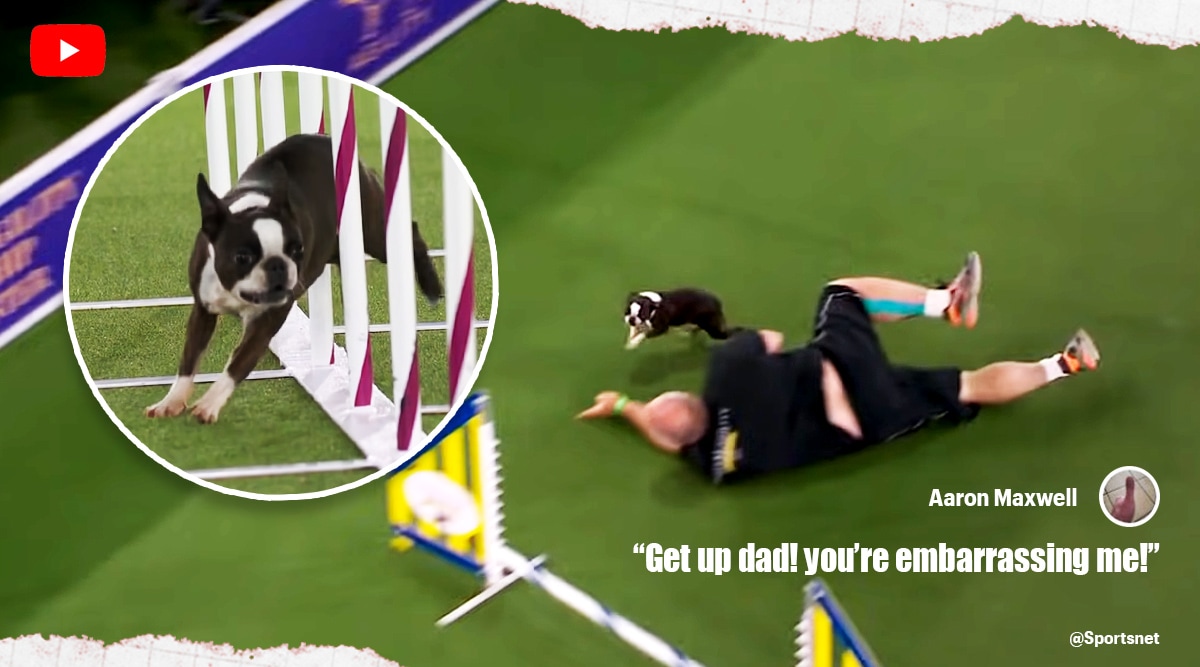Dog trainer almost crushes Boston terrier at Westminster Dog Show. Watch video
While the fall clearly slowed down Ripple, the dog still managed to finish the run.
 While the crowd continued to cheer for Ripples, who was competing in the 145th dog show, the commenter can be heard reacting to the owner's fall.
While the crowd continued to cheer for Ripples, who was competing in the 145th dog show, the commenter can be heard reacting to the owner's fall.While Wasabi the Pekingese won at the Westminster Dog Show, it is a Boston terrier that seems to have stolen the limelight. In a clip, which has now gone viral on social media, the dog was almost crushed by her handler when he fell during the show’s intense agility round.
According to a DailyMail report, Ripple was running along the course in Tarrytown, upstate New York. When she exited the tunnel, her owner tripped and fell, almost landing on the pooch. In the viral clip, Ripple can be seen stopping to look at her owner before restarting her run.
While the crowd continued to cheer for Ripples, the commenter can be heard reacting to the owner’s fall. “Oh my goodness. That was too bad,” says a commentator in the clip.
Watch the video here:
While the fall clearly slowed down Ripple, the dog finished the run and was later scooped up by her handler, who showered her with hugs and kisses after finishing the agility round.
Since being shared online, the clip has gone viral on several social media platforms and prompted empathetic reactions among netizens, who felt bad for the dog and its owner
The domestic dog (Canis familiaris or Canis lupus familiaris)[4] is a domesticated descendant of the wolf. The dog derived from an ancient, extinct wolf,[5][6] and the modern grey wolf is the dog's nearest living relative.[7] The dog was the first species to be domesticated,[8][7] by hunter–gatherers over 15,000 years ago,[6] before the development of agriculture.[1] Their long association with humans has led dogs to be uniquely adapted to human behavior,[9] leading to a large number of domestic individuals[10] and the ability to thrive on a starch-rich diet that would be inadequate for other canids.[11]
| Domestic dogs Temporal range: At least 14,200 years ago – present[1] | |
|---|---|
| Conservation status | |
| Domesticated | |
| Scientific classification | |
| Kingdom: | Animalia |
| Phylum: | Chordata |
| Class: | Mammalia |
| Order: | Carnivora |
| Family: | Canidae |
| Subfamily: | Caninae |
| Tribe: | Canini |
| Subtribe: | Canina |
| Genus: | Canis |
| Species: | C. familiaris |
| Binomial name | |
| Canis familiaris | |
| Synonyms | |
| |
The dog has been selectively bred over millennia for various behaviors, sensory capabilities, and physical attributes.[12] Dog breeds vary widely in shape, size, and color. They perform many roles for humans, such as hunting, herding, pulling loads, protection, assisting police and the military, companionship, therapy, and aiding disabled people. This influence on human society has given them the sobriquet of "man's best friend."









No comments:
Post a Comment